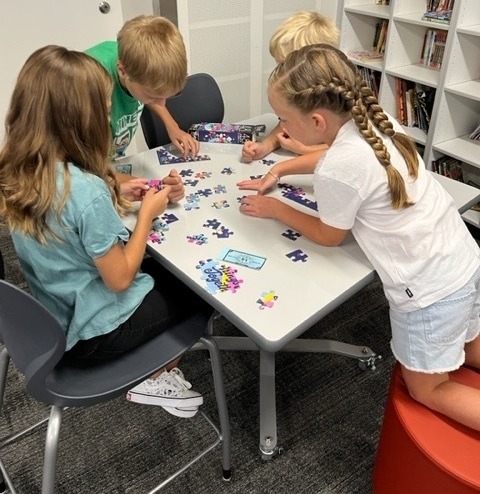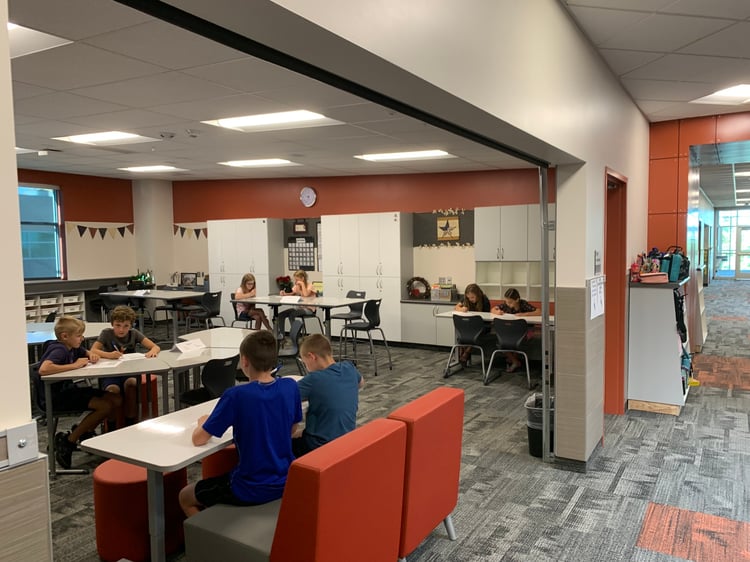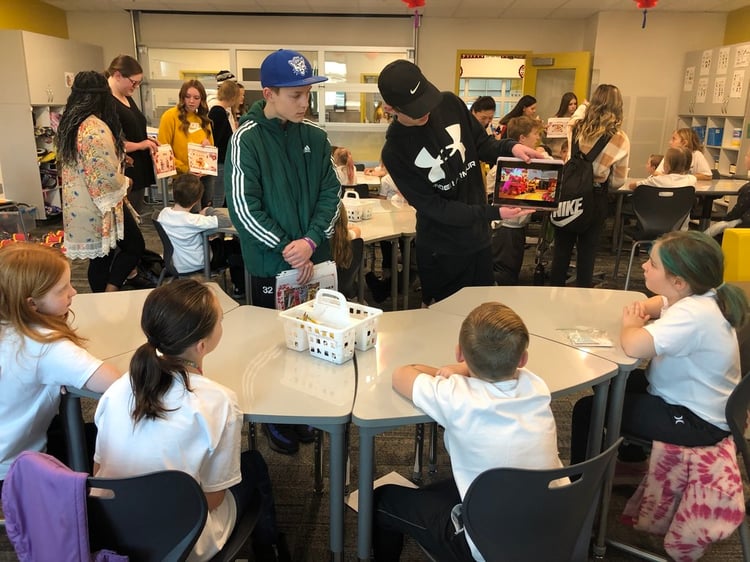Lessons Learned: Innovative environments do not equal innovative teaching and learning

Designing innovative environments or flexible spaces does not automatically guarantee innovative learning will take place. Innovative learning goes beyond physical spaces and involves the pedagogical approaches, instructional strategies, and educational technologies used within those spaces.
The site leadership in Northern Utah's Box Elder School District figured this out before Golden Spike Elementary opened its doors. This school was designed with a clear and very different vision from any other school in the district. The administration wanted to make sure their teachers were prepared for a new way of teaching right away.
“We have beautiful glass garage doors that bring in so much natural light. We had to help teachers see how they can utilize the features of the school like the flexible seating in the hallways and the wide-open spaces. How can they learn to think: “I have the whole school available to me. Can I take this lesson outside? Do I need to move this into the hall? Do I need to come down to the cafeteria? What is the best environment for the content that I'm trying to teach? I want to allow teachers to think outside the box and give them permission to think outside the box.” Shaylyn Ekins, principal, Golden Spike Elementary, UT
 As principal for Golden Spike, Shaylyn Ekins wanted to inspire teachers to think outside the box. More important, she wanted to give them permission to think outside the box.
As principal for Golden Spike, Shaylyn Ekins wanted to inspire teachers to think outside the box. More important, she wanted to give them permission to think outside the box.
To empower her teachers to embrace innovative teaching and learning, she recognized the importance of providing them with professional development opportunities. These opportunities would equip her staff with the essential skills and knowledge needed to implement innovative pedagogical practices within flexible spaces. Her goal was to initiate a transformative journey that would foster collaboration, reflection, and the sharing of best practices among her staff.
To help Shaylyn, we customized teacher professional learning to ensure that innovative environments lead to innovative learning:
- Innovative learning requires a shift in pedagogy towards student-centered approaches that foster critical thinking, problem-solving, collaboration, and creativity. Focusing on educational research, we helped teachers start to shift their thinking and design learning experiences that encouraged active student engagement, inquiry-based learning, and student agency.
“Anytime you implement anything new, if people understand the why behind it, and how it relates to student learning and those important academic and social emotional outcomes. Then they can get on board.” Shaylyn Ekins
.jpeg?width=750&height=563&name=large_1677245043000%20(1).jpeg)
- Student-Centered Approaches: Innovative learning is centered around the needs, interests, and strengths of students. During the training, teachers practiced creating opportunities for student voice and choice and allowing learners to take ownership of their learning.
…"skill sets to provide to students, to walk through their schooling experience. May it be more collaboration, more problem solving, more experience of organizing their own learning experience. The one thing that I want to hear kids say is I work better at this desk, or I work better sitting on the floor, and having that self-advocacy to say, hey, this is what works best for me.” Shaylyn Ekins

- School Culture and Leadership: To foster innovative learning, schools need a supportive culture and leadership that values and encourages experimentation, collaboration, and risk-taking. School leaders should provide the necessary resources, support, and professional learning opportunities for teachers to explore innovative practices. They should also create a culture of continuous improvement and celebrate innovation.
“One of the biggest things was and, I think still is, to make sure that we don't revert back to what's comfortable. We are participating in action research: you try something and you take you know what worked and it's okay if it doesn't work the first time. You learn from you know what you did, and you make it better the next time.
I wanted teachers to feel safe and comfortable trying something new and recognizing that it's okay to fail. It's okay to try it. It's okay to say, “I'm not sure what to do. I'm not sure how to make my math lesson work. I'm not sure how to take a math test when you know there's 6 kids sitting at a table.” Shaylyn Ekins
Innovative teaching and learning go beyond physical environments
It requires a holistic approach that combines innovative pedagogy, student-centered approaches, supportive leadership, and a culture of innovation. To ensure innovative teaching and learning will occur in innovative spaces, teachers need ongoing professional learning to encourage them to shift their thinking, start to take risks and think outside the box, to use flexible spaces and furniture to create environments where innovative learning thrives.
To hear the full podcast with Patricia Cadigan and Shaylyn Ekins, visit the EDmarket Content Hub here.
Follow the rest of our conversation on Lessons Learned in Transforming Learning Environments, see this article:
